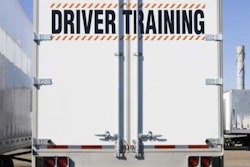When I received my CDL 16 years ago, I logged relatively few hours operating the truck. I’ve known that if I were to turn to hauling, I would need plenty of behind the wheel experience in a variety of settings before going solo over the road.
Overdrive polling shows the vast majority of readers also feel it’s a no-brainer that entry-level driver training should include a significant number of BTW hours. The Federal Motor Carrier Safety Administration and industry stakeholders in a negotiated rulemaking committee originally set that at 30. But the agency has since withdrawn that requirement from the final training rule. Instead, trainers are supposed to assess the trainee’s performance to see if it’s adequate.
 Why can’t both demonstrated driving skills and a significant number of behind-the-wheel hours be mandated for entry-level drivers?
Why can’t both demonstrated driving skills and a significant number of behind-the-wheel hours be mandated for entry-level drivers?One of two main objections to the 30-hour minimum is that no data clearly ties accidents to lack of BTW training. Studies are under way that might provide that data, but in the meantime, why not opt on the side of caution? If studies later prove there is no correlation, revisit the rule.
The other objection is that individuals learn at different rates, so a skills-based requirement makes more sense. That’s what American Trucking Associations spokesman Bill Sullivan uses to side with FMCSA, saying “skills, not simply time spent in a classroom or behind the wheel, should be the deciding factor.” Ultimately, yes, that should be the deciding factor, but why can’t BTW time also be weighted heavily?

Consider a student who’s cut a lot of classes and goofs off when he does attend. He’s a good test-taker, so he crams for the exams and passes. But his level of mastery won’t compare to that of the student who’s attended all classes and done all the homework and reading. Mastery of driving a heavy-duty truck, like mastering most things in life, requires baptism by immersion, not sprinkling.
As a reminder of who many of these driver trainees are, consider a recent report from the AAA Foundation for Traffic Safety. It found that those aged 19-24 are more likely than other drivers to read and write text messages while driving and are less likely to support restrictions on distracted driving. Extended BTW hours might wake up young CDL trainees to the vigilance required to do their jobs safely.
FMCSA has embraced regulations as complicated and expensive as mandating the use of electronic logging devices, and as simple as banning texting while driving. It’s sadly ironic that the agency charged with improving trucking safety would rely on lame excuses to shrug its shoulders at a simple, common-sense way to shore up safety.














